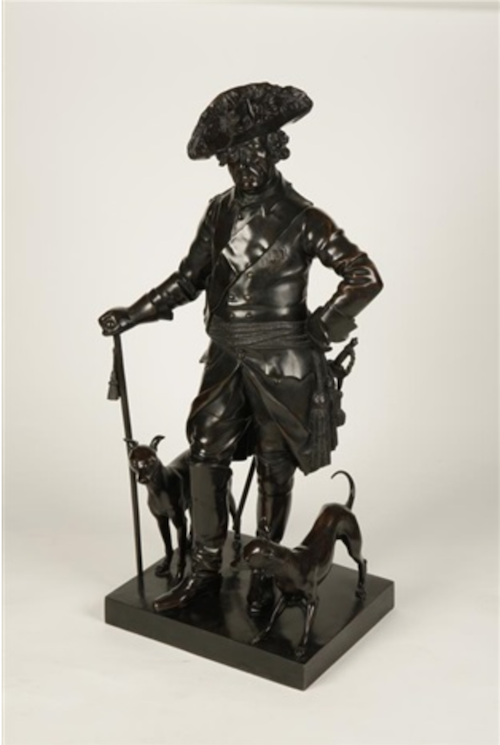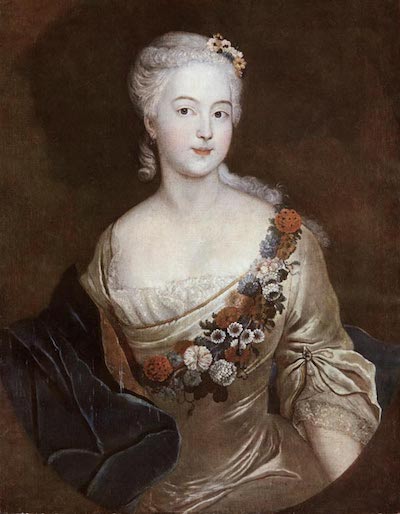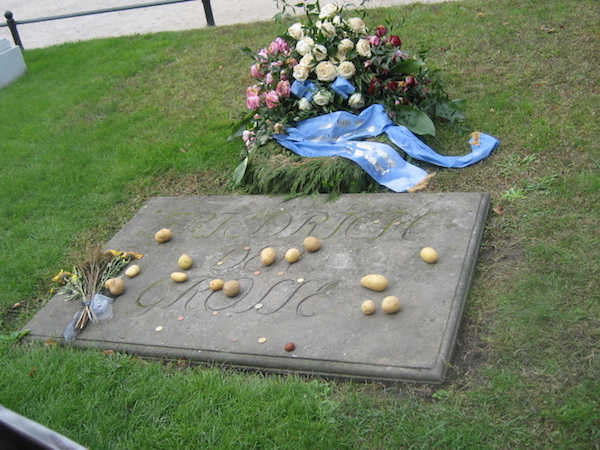
It is the contract we make with a dog. We will love them during life, and when the inevitable happens and it is time to say goodbye, we grieve until we are bereft of tears. So strong is our heartache that some of us end up mourning for every dog we ever lost, if not over every loss we ever suffered. We who do this aren’t alone: Someone once wrote the following words about the loss of his dog:”…..her death has re-awoken in me the loss of all my friends, particularly of him who gave her to me [Count Rottenburg]. I was ashamed that a dog could so deeply affect my soul.”

Wilhelmina
Those words were written by Frederick the Great in a letter to Wilhelmina, his sister, over the loss of his beloved “Biche,” an Italian Greyhound. Wilhelmina completely understood. Sixteen years earlier, Wilhelmina wrote in her diary: “A little Bolognese dog which I had for 19 years died. I loved this creature, my companion throughout all my misfortunes. Animals strike me as being rational types of beings; I have seen some so spiritual, that all they lacked was speech to articulate their thoughts.”
Wilhelmina would own another dog, “Folichon,” described as another Bolognese, and the letters that the brother and sister wrote to each other from the perspective of their respective dogs, Biche and Folichon, were filled with warm observations about the dogs, and the intense affection their owners had for them. In one letter from Biche to Folichon, Biche “wrote:” I am not used to receiving gallantries. I have constantly preserved the strict chastity of the women of my country and romantic heroism, apart from one little adventure, which spoilt my waistline; but I forgive Folichon what I wouldn’t forgive a bourgeois dog. The great love which my master [Frederick] has for your mistress [Wilhelmine] requires me to only take one dog as a lover. Yes, Folichon, I will not only accept your presents but also your graceful paw and I send you all the more gladly my heart, as I was always of the opinion that a philosophical creature suited me best.”
Imagine. The King of Prussia, a fearsome master of military tactics who enlarged Prussia’s territories and made Prussia the foremost military power in Europe, was a complete marshmallow when it came to his dogs, and Wilhelmina was no less devoted to them – this at a time when the existence of a soul in animals was being fiercely debated, and Descartes insisted that animals were unfeeling automata. That particular point of view fell on the deaf ears of Frederik and Wilhelmina. Frederick founded Germany’s first veterinary school, and in what was highly unusually for an 18th century aristocrat, he deplored hunting as cruel and uneducated.
Biche died within three years of the correspondences, her remains resting with twelve of Frederik’s other beloved dogs on the east terrace of Sans Souci, guarded by the lovely statue of Flora, and within sight of their master’s library window—the spot where he, himself wished to lie. It wasn’t going to happen. At least, not for a while.
Frederik the Great died quietly in his study at Sanssouci at the age of 74, his sister having died earlier at the age of only 49. He had left strict instructions that he be buried on the grounds of Sanssouci with his dogs, but his nephew insisted that Frederik be buried in the Garrison Church with his father. During World War II, Frederik’s remains were removed and hidden away to be found later by American Forces. Frederik was reburied at St Elisabeth’s Church in Marburg, but in 1953, his remains were moved yet again to Hohenzollern Castle where they stayed until 1991.
At long last on the 205th anniversary of his death, Fredrick the Great’s wishes were granted. His casket lay in state in the court of honor at Sanssoucci with a guard of honor. Later that night, he was laid to rest in the plot he had picked before his death – on the terrace overlooking the vineyards at Sanssouci and near the graves of his beloved dogs.

What’s with the potatoes?
We’d like to think Frederik is finally at peace with his dogs, and we think it’s touching, if not quirky, that people visiting his grave still lay potatoes on the gravestone. Among his many accomplishments, Frederick introduced potatoes to Germany. When not fighting the Austrians, he visited towns and passed out potatoes which he saw as having the potential to help feed his nation and lower the price of bread. It eventually became a staple crop in the nation, and this is why people put potatoes on top of his grave.
Image: Bronze study of Frederick the Great with his Hounds by Johann Gottfried Schadow –1764–1850
